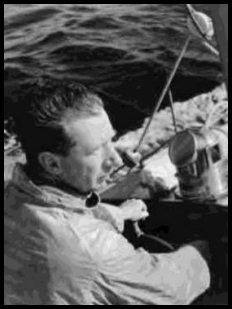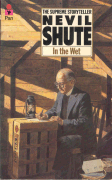39 Steps to Marazan - (well 19 anyway)
by Andy Burgess
Presented at the Nevil Shute Norway Mini-Gathering in Dartmouth May 2008.
Introduction
I have a copy of the radio play of "The 39 Steps" as well as the audio book of Marazan and I listen to them from time to time, usually while travelling in my car. The radio play is a reasonably faithful representation of the book (unlike the three films made of it) and it struck me at some point that there are similarities between the books. Shute would have been a teenager at the time The 39 Steps was first published and it is not inconceivable that he might have read the book. Could this book have influenced him when writing Marazan some 9 or 10 years later?
Dates- The 39 Steps Published: 1915
- Marazan Published: 1926
- When first encountered the central character in both novels is annoyed: Hannay looking to go back to South Africa, Stenning tired after flying and annoyed with the 'photographer' he has just been working with.
- Both characters meet someone 'on the run': Hannay meets Scudder (a secret agent being pursued by the Black Stone), Stenning meets Compton, an escaped convict on a mission.
- Both characters agree to help the fugitive when they have apparently no need to.
- Both fugitives have to stay out of the way or free until a specified day/time.
- Both characters decide they have to disappear for a while to help their fugitives with their cause.
- Neither character is aware of the real reason the fugitives are on the run. Scudder tells Hannay a version of the truth, which Hannay eventually uncovers after he deciphers Scudder's coded notes. Stenning knows that Compton is on the run and is prepared to help him get out of the country, but eventually finds out the reason for his escape.
- Both characters agree to help the fugitives 'lay low' for a while. Hannay puts Scuddder up in his flat; Stenning lays a false trail to take the police off the scent.
- Both fugitives are eventually killed, Scudder rather earlier than Compton.
- Both characters decide they must get away for some time to a place they are familiar with. Hannay to Scotland where he thinks his veldcraft would assist him, Stenning to a boat in the channel. Buchan was, of course, Scottish and Shute enjoyed sailing.
- Both characters embark on a train journey to avoid their pursuers.
- Both characters use a ploy of doubling back on the railway to confuse the pursuers.
- Both characters leave 'red herrings' at hotels to confuse pursuers. Hannay at the 'literary innkeepers' and Stenning at Exeter.
- Both characters unexpectedly meet up with the 'villains'. Hannay in a house on the Scottish moors, Stenning at Marazan.
- Both characters are initially wanted by the police. Hannay for the 'Portland Place murder' and Stenning for offences under the 'Air Navigation Act', but these charges are subsequently dropped with little ceremony.
- Both characters engage in 'fist fights' with people they encounter: Stenning with Fredrick Grigger and Hannay with Marmaduke Jopley.
- Both characters eventually contact the authorities: Hannay with Sir Walter Bullivant, Permanent Undersecretary at the Foreign Office and Stenning with Sir David Carter of Scotland Yard.
- Both characters are connected to these people by a third party. Bullivant is godfather to a person Hannay encounters on his travels. Carter is the father of a friend of Joan Stevenson.
- Both characters end up helping the police/authorities to foil the villains and both are directly involved in the capture at the end. Hannay at Trafalgar Lodge (where 39 steps go down to the beach), Stenning on Salisbury Plain.
- Is there a more specific connection between the novels?
In the 39 Steps there is a date that Scudder has to stay alive for.
In Marazan Compton says he can leave the country on the 18th because the event he has escaped for occurs on a certain date before that.
Both dates are: June 15th
ConclusionThe 39 Steps was (and still is) a very popular book and it seems highly likely that Shute would have known about it. It is always said however that he did not read many novels, so whether he had read the Buchan book is open to question. Some of the similarities identified above could well be characteristics of the time. Any journey in the 1920's or before would most likely be by rail, for instance. Nevertheless the number of similarities is somewhat striking and in particular the coincidence of the exact date on which the key event in each book is to take place. This even suggests that Shute was deliberately linking the two stories, perhaps providing some recognition to the Buchan story as inspiration. Alternatively it is just another 'Shute Spooky Coincidence'.


